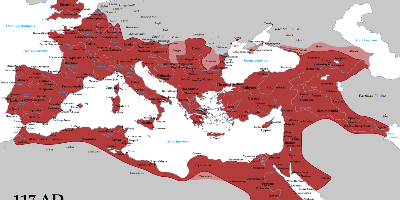Reign of Nikephoros III Botaneiates (7 gen 1078 anni – 1 apr 1081 anni)
Descrizione:
Nikephoros III Botaneiates, Latinized as Nicephorus III Botaniates (1002 – 10 December 1081), was Byzantine emperor from 7 January 1078 to 1 April 1081. He was born in 1002, and became a general during the reign of Byzantine Emperor Constantine IX Monomachos, serving in the Pecheneg revolt of 1048–1053. His actions in guiding his forces away from the Pechenegs following the Battle of Zygos Pass, in which they suffered eleven days of harassment before finally reaching the Byzantine city of Adrianople, attracted the attention of fellow officers, and he received the title of magistros as a reward. Nikephoros served in the revolt of Isaac I Komnenos against the Byzantine Emperor Michael VI Bringas, leading forces at the decisive Battle of Petroe. Under Emperor Constantine X Doukas he was made dux of Thessalonica, where he remained until c. 1065, when he was reassigned as dux of Antioch. While dux of Antioch, he repelled numerous incursions from the Emirate of Aleppo. When Constantine X died in 1067, his wife, Empress Eudokia Makrembolitissa, considered taking Nikephoros as husband and emperor, but instead chose Romanos IV Diogenes. The need for an immediate successor was made pressing by the constant Seljuk raids into Byzantine Anatolia, and Eudokia, Patriarch John VIII of Constantinople, and the Byzantine Senate agreed that their top priority was the defense of the empire and that they needed an emperor to lead troops to repel the Turks. Nikephoros was the favorite candidate of the senate, but was in the field leading troops in Antioch and was still married. Romanos, once chosen to be emperor, exiled Nikephoros to his holdings in the Anatolic Theme, where he remained until he was brought out of retirement by Emperor Michael VII and made kouropalates and strategos of the Anatolic Theme.Nikephoros came into conflict with Michael in 1078 when he pleaded with the emperor to address the worsening situation in Byzantine Anatolia, insulting Michael with his frankness. In order to protect himself, Nikephoros gathered an army of native troops and Turkish mercenaries and declared himself emperor on 2 July 1078. Nikephoros gathered a strong support base due to his military acumen and family renown, allowing him to enter Constantinople on 24 March 1078 and seize the throne. As emperor, Nikephoros faced numerous revolts, including those of Nikephoros Bryennios, Nikephoros Basilakes, and Constantine Doukas, as well as an attempted assassination by the Varangian Guard. Nikephoros embraced the trappings of emperor, performing many acts to increase his legitimacy and support, such as spending large amounts on donatives for the army and his supporters, forgiving all debt in arrears, and instituting minor legal reforms. Diplomatically, Nikephoros secured the submission of Theodore Gabras and Philaretos Brachamios, governors of Trebizond and Antioch, respectively, who had become de facto independent of the Byzantine Empire due to the constant incursions of the Seljuks into Byzantine Anatolia.
In 1081, the Norman Duke Robert Guiscard of Apulia prepared to invade the Byzantine Empire under the pretext of defending the succession of Constantine Doukas, who had been engaged to Robert's daughter Helena. Alexios I Komnenos was entrusted with an army and sent to defeat the Norman threat, but instead conspired with his relative John Doukas to seize the throne. Alexios raised a rebellion against Nikephoros and was able to quickly encircle Constantinople and besiege it, due to the lack of a defensive army. Nikephoros was unable to secure the support of either the Seljuk Turks or Nikephoros Melissenos, his traditional rivals, and therefore was forced to prepare for abdication. Nikephoros decided that his only choice was to abdicate in favor of Melissenos, who was nearby in Damalis in Anatolia, and sent messengers to him across the Bosphorus; however, these messengers were intercepted by George Palaiologos, a general of Alexios, who persuaded them to support Alexios. Alexios and his forces broke through the walls of Constantinople on 1 April 1081 and sacked the city. Nikephoros fled and sought sanctuary inside of the Hagia Sophia. Nikephoros was taken from there to the Monastery of Peribleptus, where he abdicated and became a monk. Nikephoros died later that year, on 10 December 1081.
Aggiunto al nastro di tempo:
Data:
7 gen 1078 anni
1 apr 1081 anni
~ 3 years and 2 months
